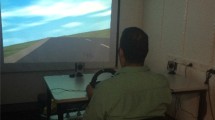Abstract
Since one of the most crucial elements in crashes is related to human factors, driver behavior significantly impacts road safety. Driver behavior is influenced by many factors, including driving characteristics, experience, and the road environment. In this study, the effect of combining different elements including shoulder width (left shoulder width up to 0.6 m and more than 0.6 m as well as right shoulder width up to 1 m and more than 1 m), type and height of barriers (guardrail with a height 0.7 m, New Jersey with a height of 1.1 m, and retaining walls with heights of 5 and 10 m) on driver behavior on urban highways (in both upgrade and downgrade scenarios) was investigated. For this purpose, 20 urban highway segments were selected for filming and speed recording using the laser gun camera. The results revealed that New Jerseys on the left shoulders had caused driver workload and concentration more than guardrails. An average of 5% reduction in speed and a 25% increase in the lateral offset of the barriers were recorded to reduce the driver's workload. A 10-m retaining wall has caused more driver workload and concentration on the right shoulder than the curbs. An average of 8% reduction in speed and a 36% increase in the lateral offset of the barriers were recorded to reduce the driver's workload. It was also concluded that increasing the shoulder width can reduce the driver's workload. Finally, the movement methods model was predicted by using the nonlinear regression model for different car wheel positions from lateral lanes to various road barriers.



Similar content being viewed by others
References
Dimitropoulos I, Kanellaidis G (1998) Highway geometric design: the issue of driving behavior variability. In: International symposium on highway geometric design practices. Transportation research board, Boston (p. 41)
Lamm R, Psarianos B, Mailaender T (1999) Highway design and traffic safety engineering handbook
Abdel-Aty MA, Abdelwahab HT (2004) Predicting injury severity levels in traffic crashes: a modeling comparison. J Transp Eng 130(2):204–210
Messer CJ (1980) Methodology for evaluating geometric design consistency. Transportation research board, Washington, DC, pp 7–14
Christodoulou CG, Georgiopoulos M (2001) Applications of neural networks in electromagnetics. Artech House Inc., Norwood, MA, US, ISBN:978-0-89006-880-9
Bonneson JA (2000) Superelevation distribution methods and transition designs, vol 439. Transportation research board. http://onlinepubs.trb.org/Onlinepubs/nchrp/nchrp_rpt_439.pdf
Chin HC, Quddus MA (2003) Applying the random effect negative binomial model to examine traffic accident occurrence at signalized intersections. Accid Anal Prev 35(2):253–259
Cafiso S, Di Graziano A, La Cava G (2005) Actual driving data analysis for design consistency evaluation. Transp Res Rec 1912(1):19–30
Syed L, Hassan Y (2005) Role of uneven vehicle weight distribution in curve driving. In: Proceedings of 6th transportation specialty conference for the Canadian society for civil engineering, Toronto, Ont (pp. 2–4)
Shinar D, Ronen A (2007) Validation of a single screen simulation for speed perception and production. Adv Transp Studies Int J 5:51–56
Misaghi P, Hassan Y (2005) Modeling operating speed and speed differential on two-lane rural roads. J Transp Eng 131(6):408–418
Janssen WH, De Ridder S, Brouwer RFT, Thomson R, Fagerlind H, Lanner G, Dupre G, Bisson O, Garcia JM, Figaredo A, Papi J, Wink W (2006) Roadside infrastructure for safer European roads: D02 Summary of driver behaviour and driver interactions with roadside infrastructure
Martens MH, Compte S, Kaptein NA (1997) The effects of road design on speed behaviour: a literature review. TNO Human Factors Research Institute
Theeuwes J, Godthelp H (1995) Self-explaining roads. Saf Sci 19(2–3):217–225
Moradi M, Abdi Kordani A, Zarei M (2021) New geometric design approach to reduce vehicle’s speed in accident-prone downgrade highways using dynamic vehicle modeling. J Transp Eng A Syst 147(1):04020149
Manual HC (2016) A guide for multimodal mobility analysis (HCM). Transportation Research Board of the National Academies, Washington, DC
Naderi JR, Kweon BS, Maghelal P (2006) Simulating impacts of curb-side trees on driver performance and perceptions. In: proceedings of the 85th annual meeting transportation research board. Washington
American association of state highway and transportation officials (2011) A Policy on geometric design of highways and streets. Washington. D.C. ISBN: 978-1-56051-508-1
Bamzai R, Lee Y, Li Z (2011) Safety impacts of highway shoulder attributes in Illinois, (11–078). University of Illinois, Urbana-Champaign, ISSN: 0197-9191
Ben-Bassat T, Shinar D (2011) Effect of shoulder width, guardrail and roadway geometry on driver perception and behavior. Accid Anal Prev 43(6):2142–2152
Mecheri S, Rosey F, Lobjois R (2017) The effects of lane width, shoulder width, and road cross-sectional reallocation on drivers’ behavioral adaptations. Accid Anal Prev 104:65–73
Pokorny P, Jensen JK, Gross F, Pitera K (2020) Safety effects of traffic lane and shoulder widths on two-lane undivided rural roads A matched case-control study from Norway. Accid Anal Prev 144:105614
Oh C, Kim T, Lee J, Choi S, Joo S (2012) A method for determining variable message sign (VMS) Locations for safe exiting at freeway off-ramp based on driving simulation experiments (No. 12–0374). Transportation Research Board, Washington, DC, US
Bates DM, Watts DG (1988) Nonlinear regression analysis and its applications, vol 2. Wiley, New York
Transportation officials (2011) Task force for roadside safety. Roadside design guide. AASHTO
Godley ST, Triggs TJ, Fildes BN (2004) Perceptual lane width, wide perceptual road centre markings and driving speeds. Ergonomics 47(3):237–256
Dewar RE, Olson PL (2002) Human factors in traffic safety. Lawyers & Judges Publishing Company. Inc., Tucson, Arizona, p 719
Bella F (2013) Driver perception of roadside configurations on two-lane rural roads: effects on speed and lateral placement. Accid Anal Prev 50:251–262
Author information
Authors and Affiliations
Corresponding author
Ethics declarations
Conflict of interest
The authors declare that they have no conflict of interest.
Rights and permissions
About this article
Cite this article
Hosseini, J., Abdi Kordani, A., Zarei, M. et al. Evaluation of the effect of roadside barrier type on lateral offsets in urban highways. Innov. Infrastruct. Solut. 7, 20 (2022). https://doi.org/10.1007/s41062-021-00623-9
Received:
Accepted:
Published:
DOI: https://doi.org/10.1007/s41062-021-00623-9




